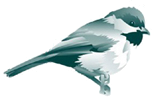Rescue Stories

Rescue Stories
Meet our guests!
WBR is dedicated to caring for these ill, abandoned or injured wild birds so that they may be released back into their natural habitat. Visit the "Get Involved" tab to learn how you can help!

The Cardinal
These photographs are a tribute to the many people who played a part in this Cardinal's successful rehabilitation: from the rescuer who brought him in as an orphaned fledgling (shown top left) weighing 19 grams, followed by the many volunteers who hand-fed him until he became self-feeding and then cared for him in the aviary while he acclimated to life in his natural habitat.
A volunteer who specializes in finding the right home for our patients released him in Kirkwood (shown bottom left) weighing 43 grams.
Two weeks later he continues to thrive (shown right) and develop. At this stage he is a young male and his feathers will eventually be solid red.

Brown Thrasher
This adult Brown Thrasher is on his way home. He is in the aviary building strength after being the victim of a car strike. We hope to release him very shortly once he shows sufficient wing strength! Adult birds are released back in their original neighborhood.

Cardinal Nest Mates
Here are two Cardinals learning to be nest mates – they are from two different families and were found on the ground. Their constant squawking is driving everyone in the E.R. crazy! If you find a bird on the ground be sure to refer to our web page http://wildbirdrehab.org/help-ifoundabird/#baby for detailed information about what to do. If possible we want the babies to remain with mom, so call to discuss before you bring in a bird phone: 314-426-6400.

Sole Phoebe Survivor
Another victim…this Phoebe was the only survivor of a starling invasion of the family’s nest space. Originally the Phoebe was fed bloodworms – as shown here and kept hydrated and warm. Since he appears to have stabilized he will be fed the normal diet of mealworms, waxworms and cricket bellies.
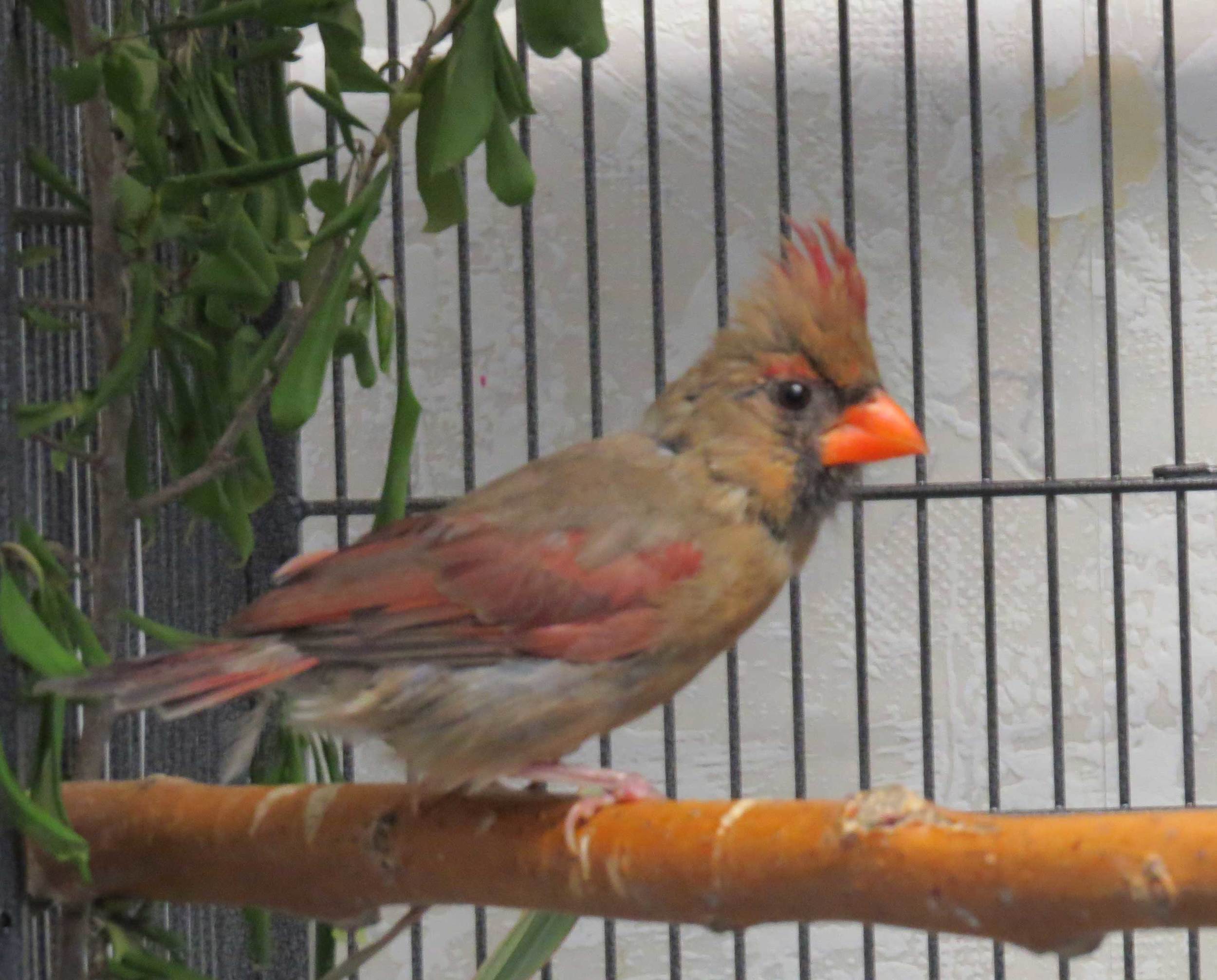
Adult Female Cardinal - Glue Trap Mishap!
This adult female cardinal is recovering from an encounter with a glue trap. She lost the majority of her flight feathers when they were broken or compromised as she was removed from the trap. Her rescuer brought her to WBR still stuck to the trap -- a good move since the removal was a tricky process. (See our "Help - I found a bird!" guide for tips on this topic.)

Black-Capped Chickadee siblings
This bundle of fur is actually three Black-capped Chickadee siblings found on the ground. They appear to have been mauled, probably by a cat since they have puncture marks. The mother was nearby but wouldn't approach the babies – probably concerned that the cat may still be in the area. Four were brought in but one did not survive.

Robin Siblings
This is a threesome of Robin siblings. Two are napping after their meal – they are being fed every 15 minutes – and we see the open beak of one who is ready for more. The fourth sibling did not survive. Mom was killed by a cat. House cats and feral cats kill more than 1 billion birds each year – it’s critical to keep them indoors.

Eastern Bluebirds
We’re awaiting the prognosis on these Eastern Bluebird nestlings who are all that remain of a family that was attacked by House Sparrows. The North American Bluebird Society says this: “House Sparrows are extremely aggressive. They will harass, attack, and kill adult native birds when competing for nest sites, and destroy their eggs and young. They also overwhelm birdfeeders, driving native birds away.” The nestlings arrived at WBR with damaged beaks and covered in the blood of their family members who perished. WBR is working hard to get these brave little bluebirds on the road to recovery!

Mourning Dove Nestlings
These two Mourning Dove nestlings arrived after they were abandoned. Their rescuer made sure the mother was not visiting the nest and this was verified at WBR by the fact that they were not recently fed. Sometimes it appears the nest is abandoned, but be sure to observe constantly for an hour before determining the mother is not visiting.

Chimney Swift Release
Watch these chimney swifts progress from admittance to the moment we all live for -- a successful release back into their natural habitat!

Nighthawks
These nighthawks are from two different families, and it appears to be love at first sight! The female - shown here on the right - is always ready for a cuddle with the male.
In the wild, nighthawks eat flying insects and are fed by their parents until ready to leave the nest. These two lovebirds - er, nighthawks - will need to be hand fed until they are released.
The nighthawks will be released at dusk in an area where other nighthawks have been sighted. There they will join the group and learn the art of catching flying insects!
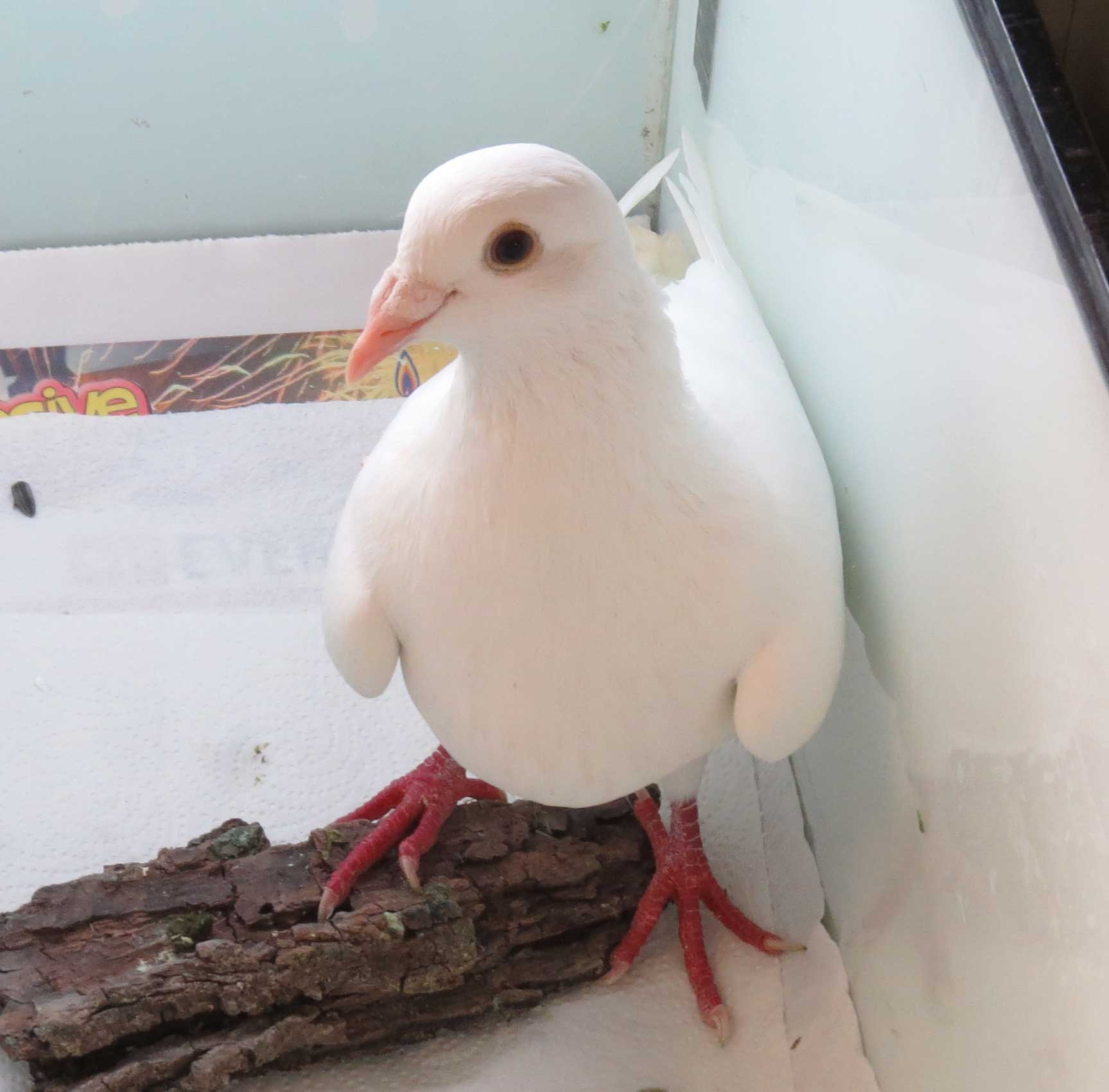
White Pigeon
White pigeons and doves are often released at special events such as weddings and funerals. Unfortunately, if they haven’t been trained to “home,” they end up as easy prey for hawks. The lucky ones - like the one shown here - end up at Wild Bird Rehab for treatment.
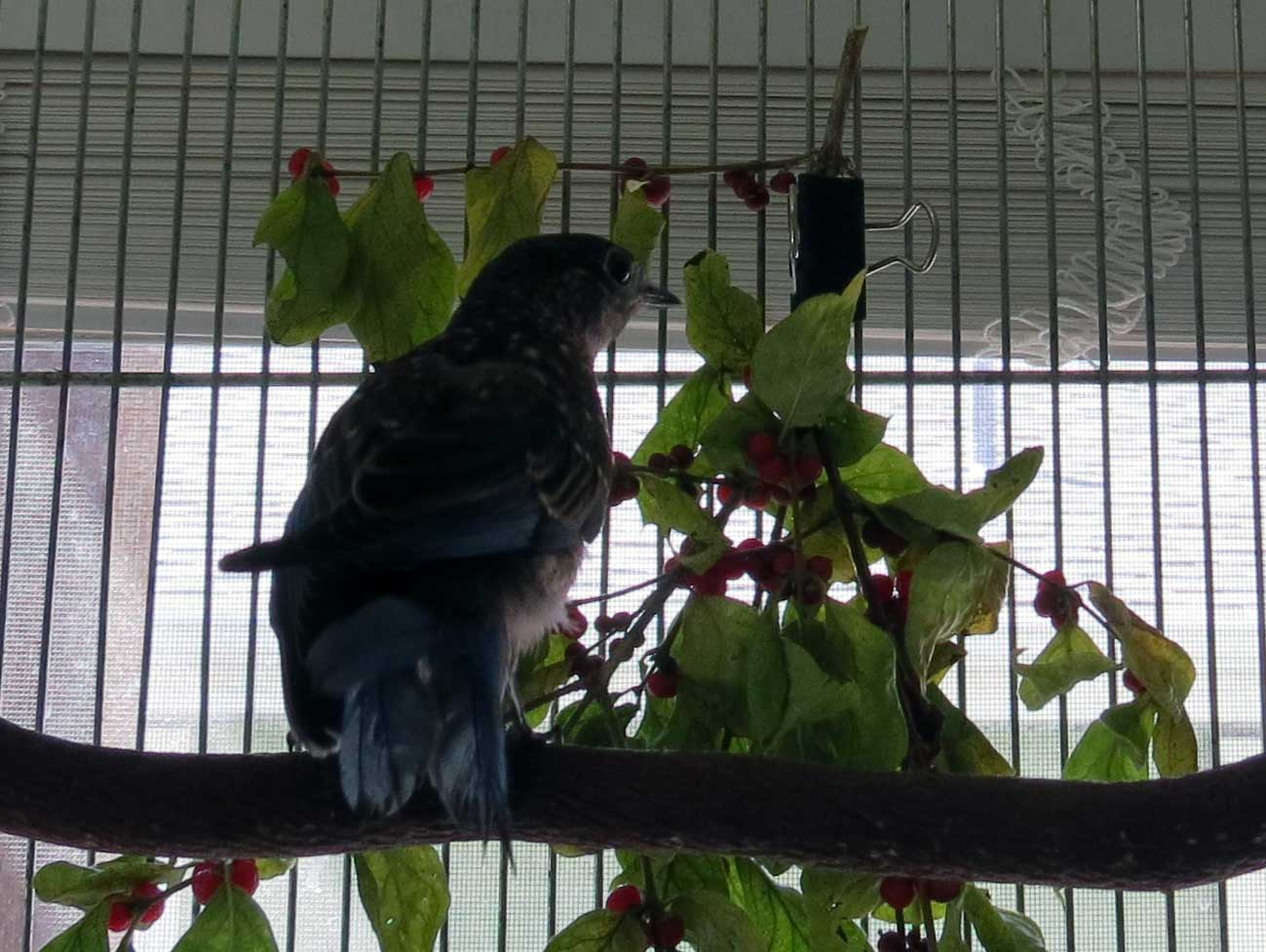
Bluebird Blues
This bluebird, most likely struck by a vehicle, was found on his back on the side of a busy road. Looking wistfully out the window it’s obvious this bluebird is ready to escape the confines of his current home. He will not have to wait long! His next stop is the aviary followed by release!
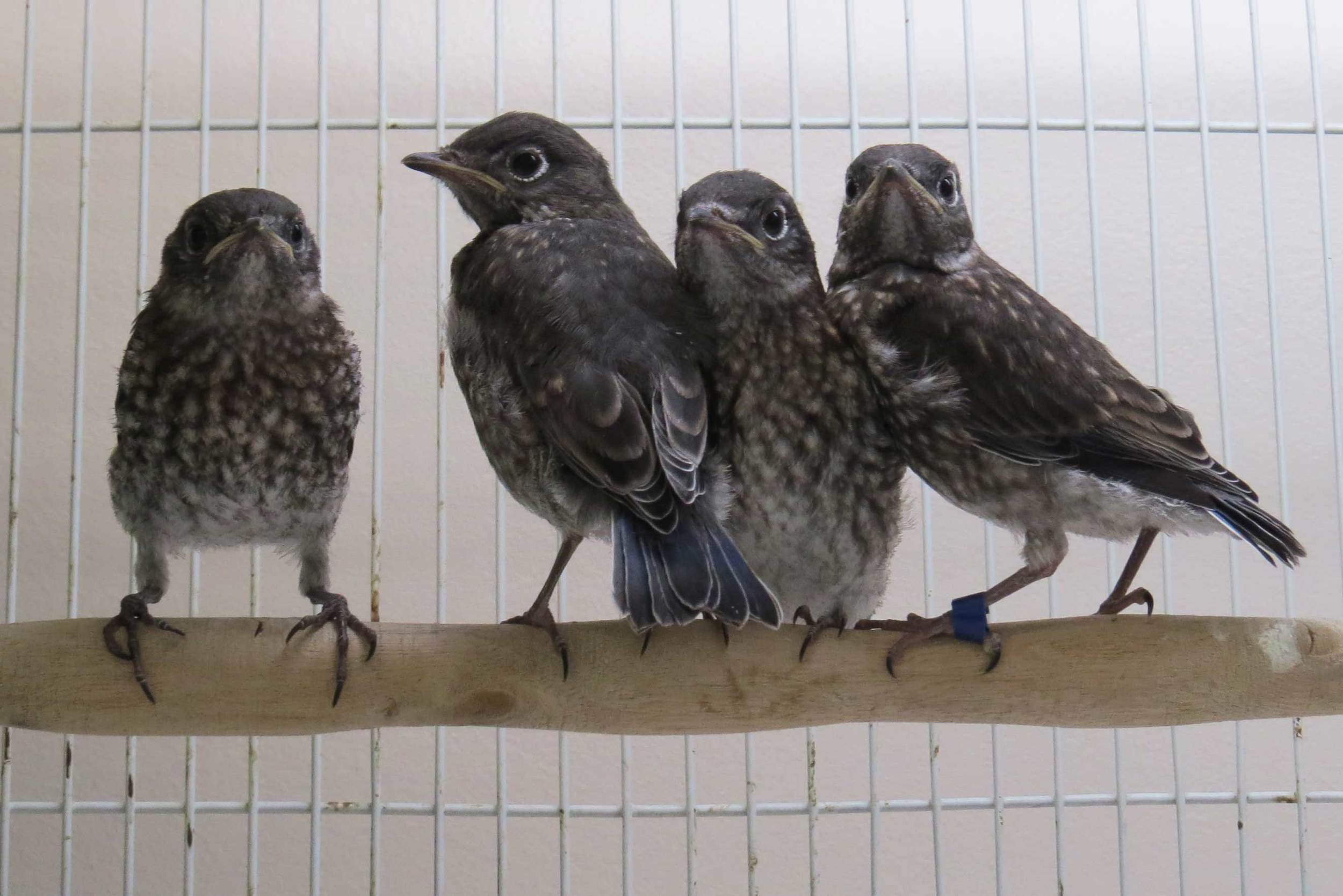
Bluebird Family - Part One
These lucky little bluebirds were delivered "naked" after having fallen from the nest shortly after hatching. The bluebirds are shown here in the WBR nursery. Move to the next slide to see their impressive progress!
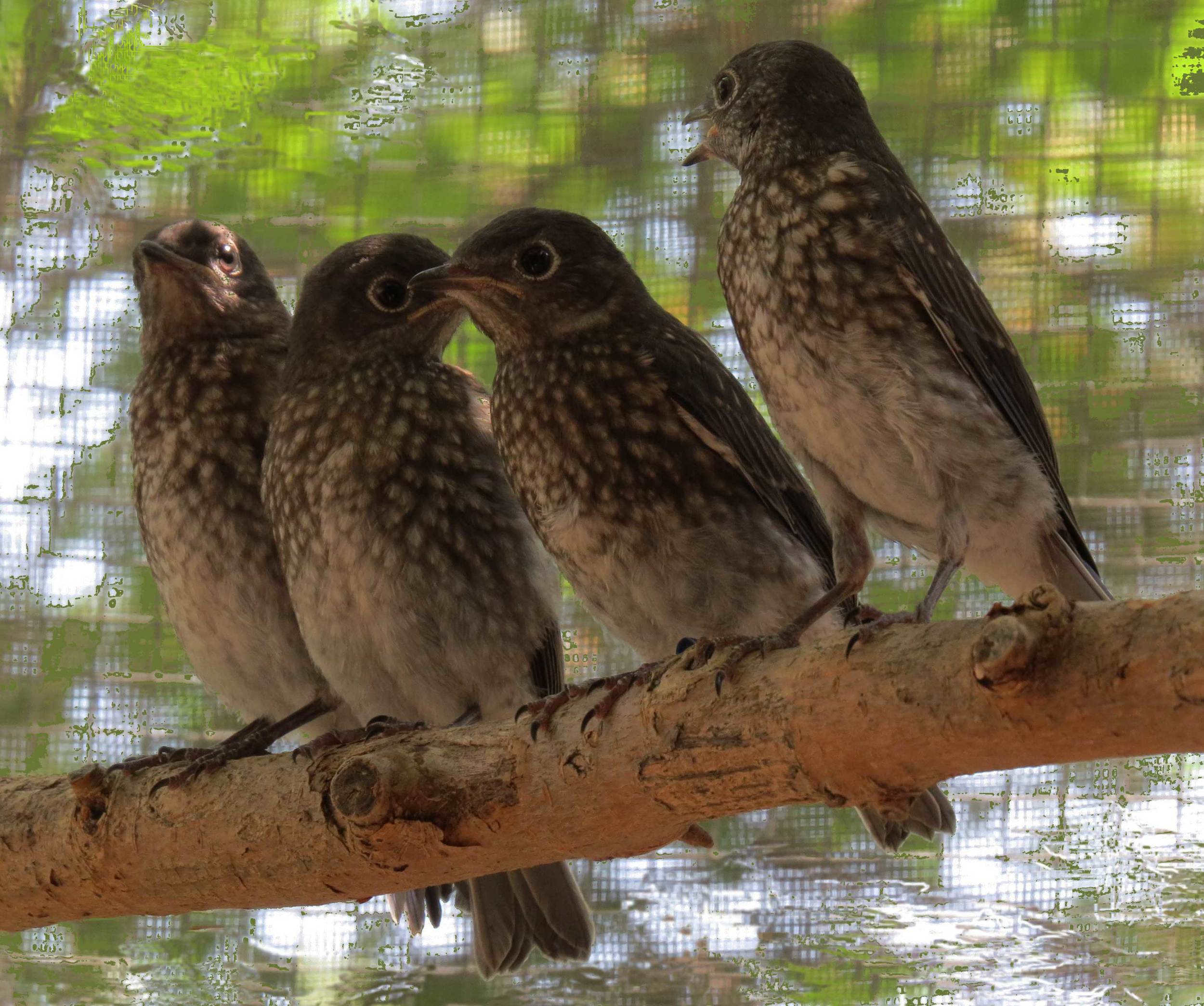
Bluebird Family - Part Two
These lucky little bluebirds were delivered "naked" after having fallen from the nest shortly after hatching. The bluebirds are shown here in the WBR aviary. Next stop - release! All aboard!
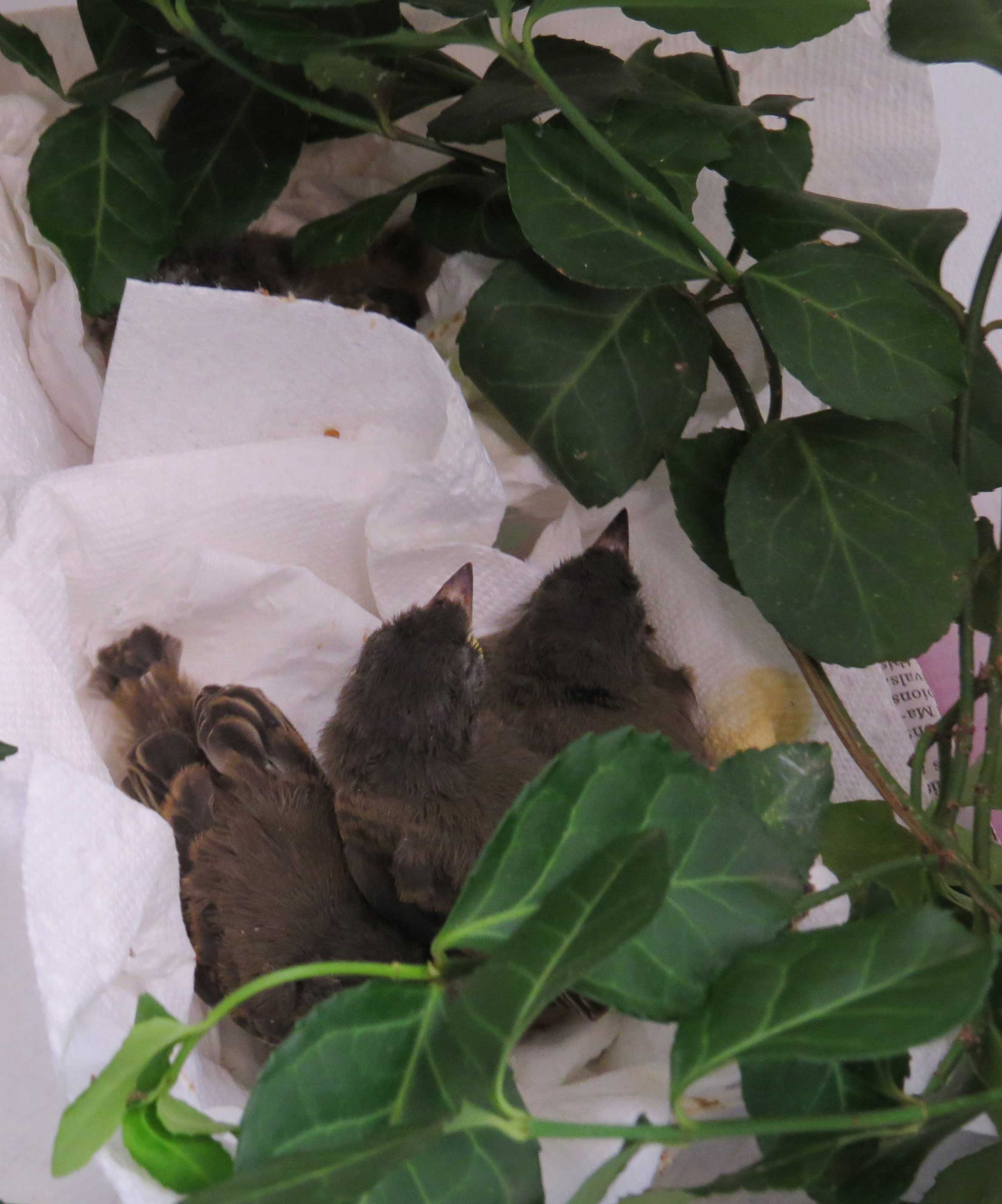
Phoebes - Part One
These baby Phoebes were admitted with mites; they were lethargic and didn't liven up for a feeding, which is very unusual. In fact the fourth member of the family is hiding in the back – not even showing his head. Move to the next slide to see how far they have come!
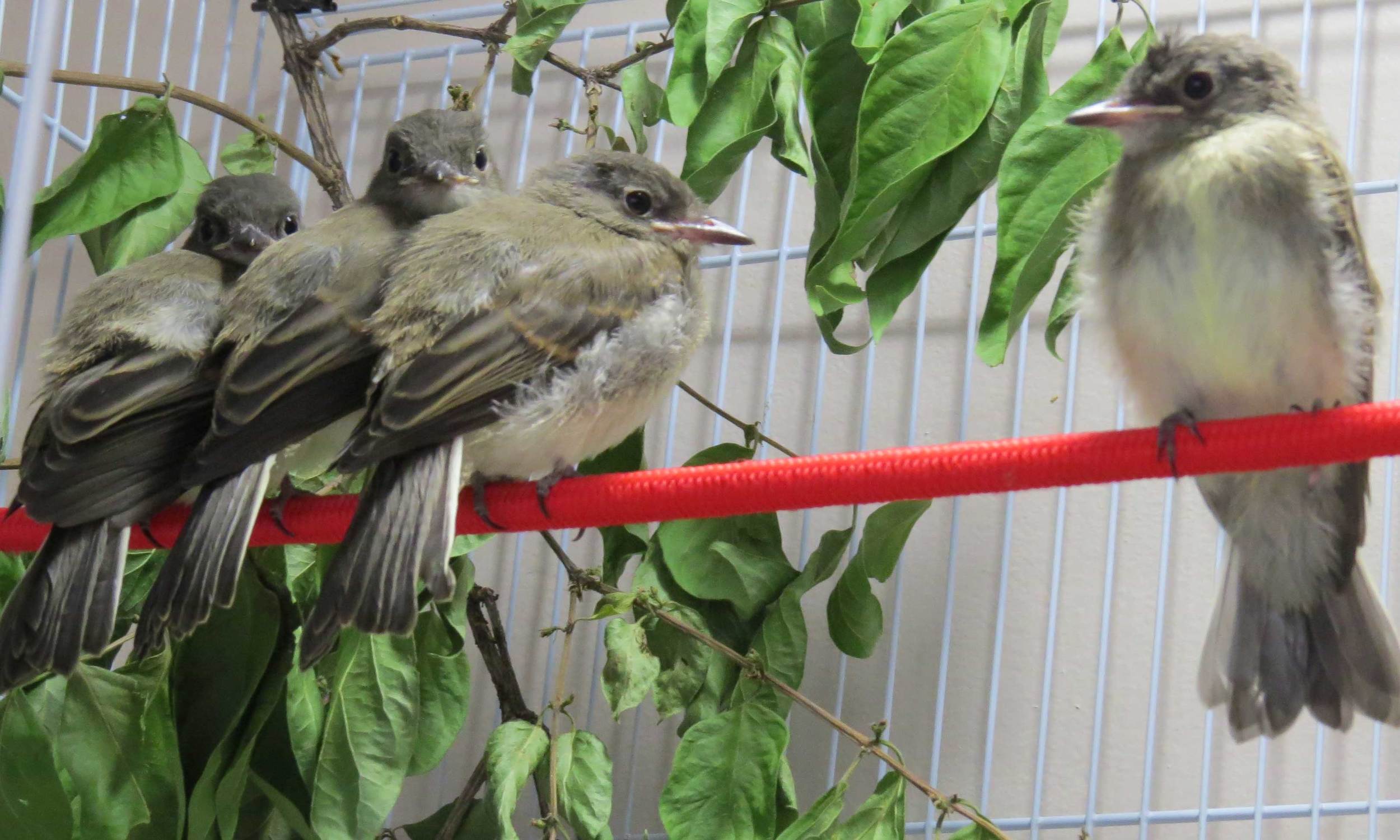
Phoebes - Part Two
These baby Phoebes were admitted with mites; they were lethargic and did not liven up for feeding. Here they are shown just two weeks later – all plumped up and well on their way to release!
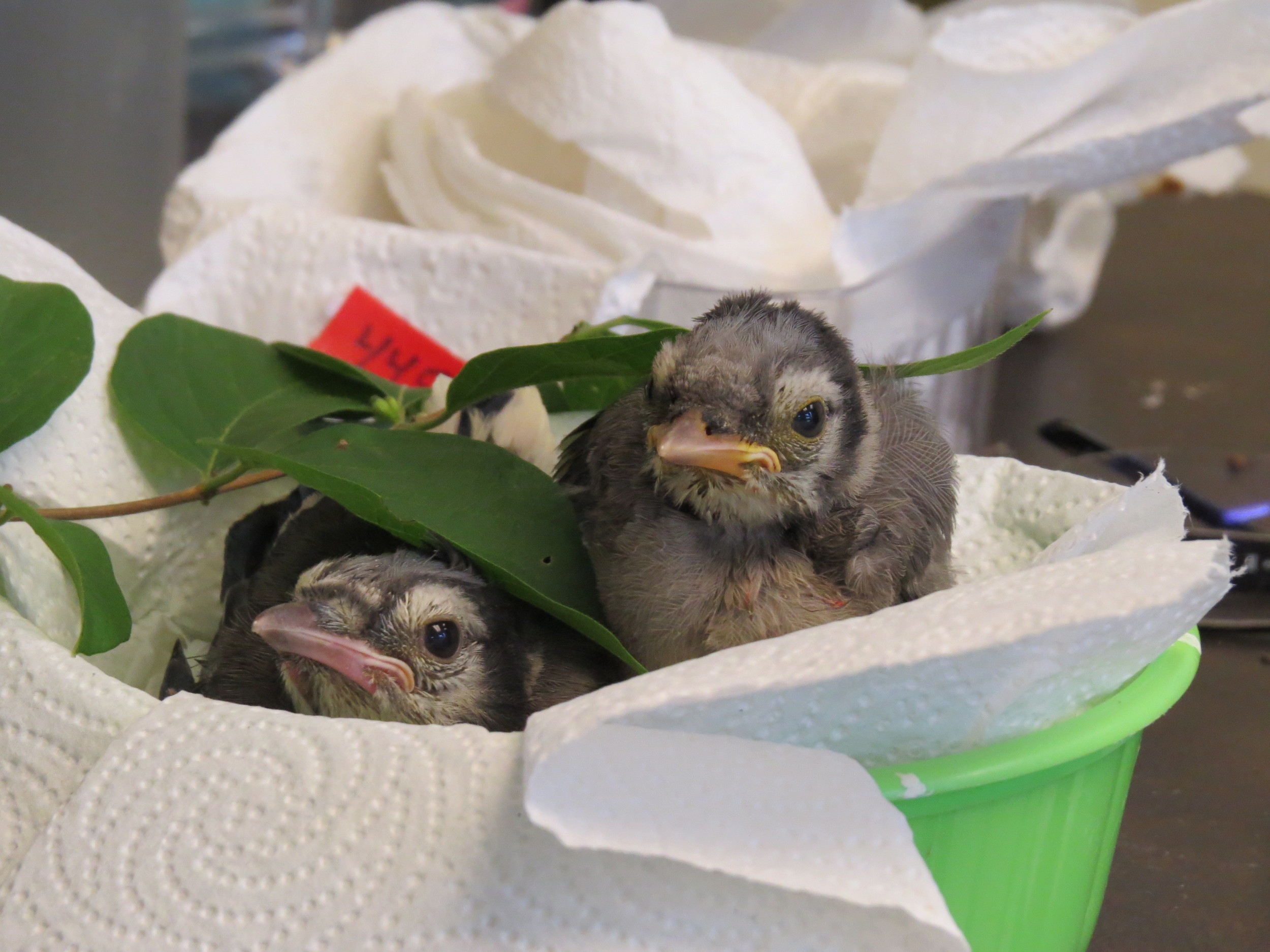
Blue Jay Buddies!
These blue jays certainly have attitude! They are two to three weeks old and, although quite chummy, are actually from two different families. One was found on the ground and the other survived a cat attack.
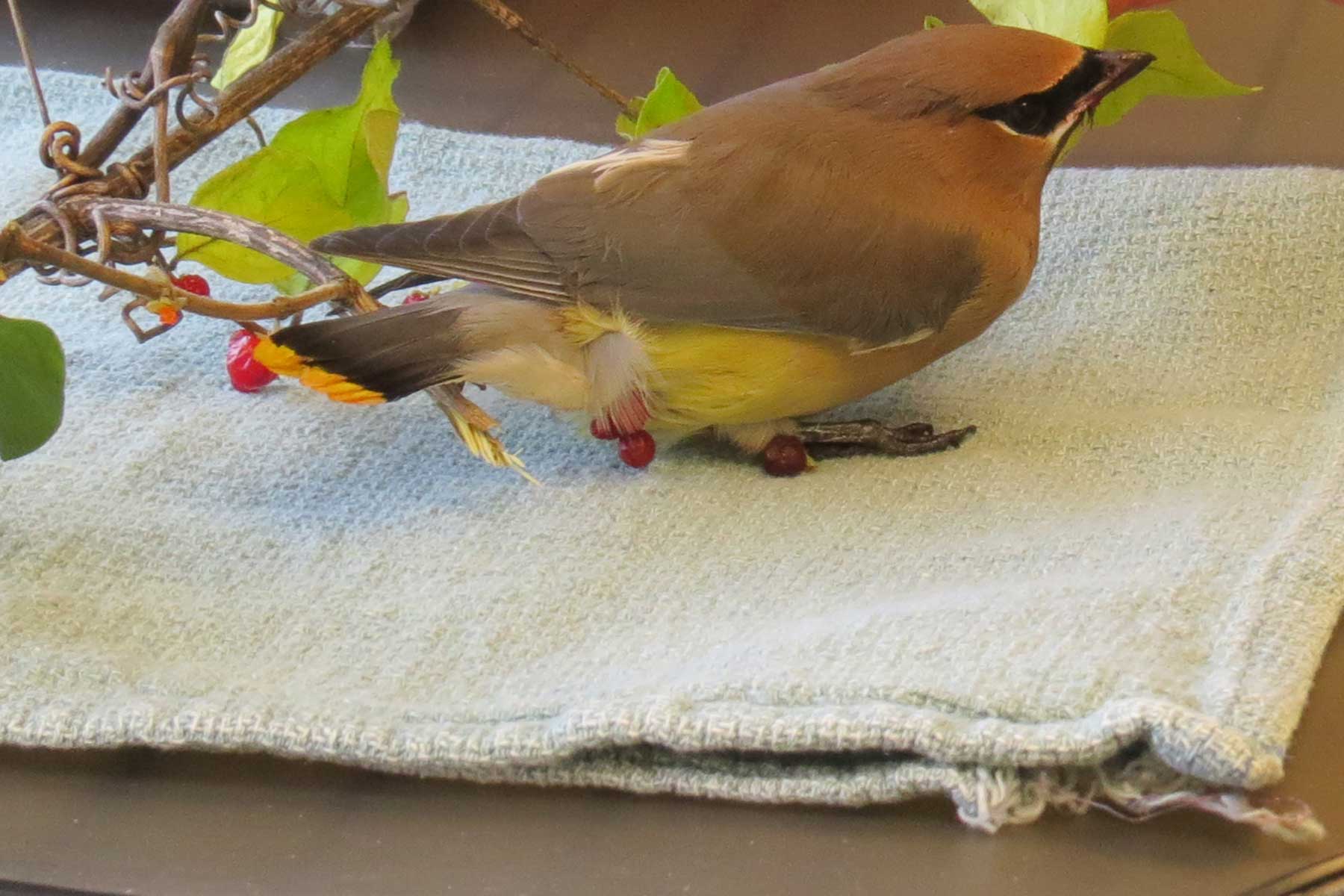
Cedar Waxwing
This cedar waxwing was treated for injuries sustained as a result of a window strike. Although they do eat some insects, cedar waxwings are primarily fruit eaters. This lucky fellow enjoyed blueberries, raspberries and honeysuckle. Although the honeysuckle bush in an invasive species, the birds do love the berries!
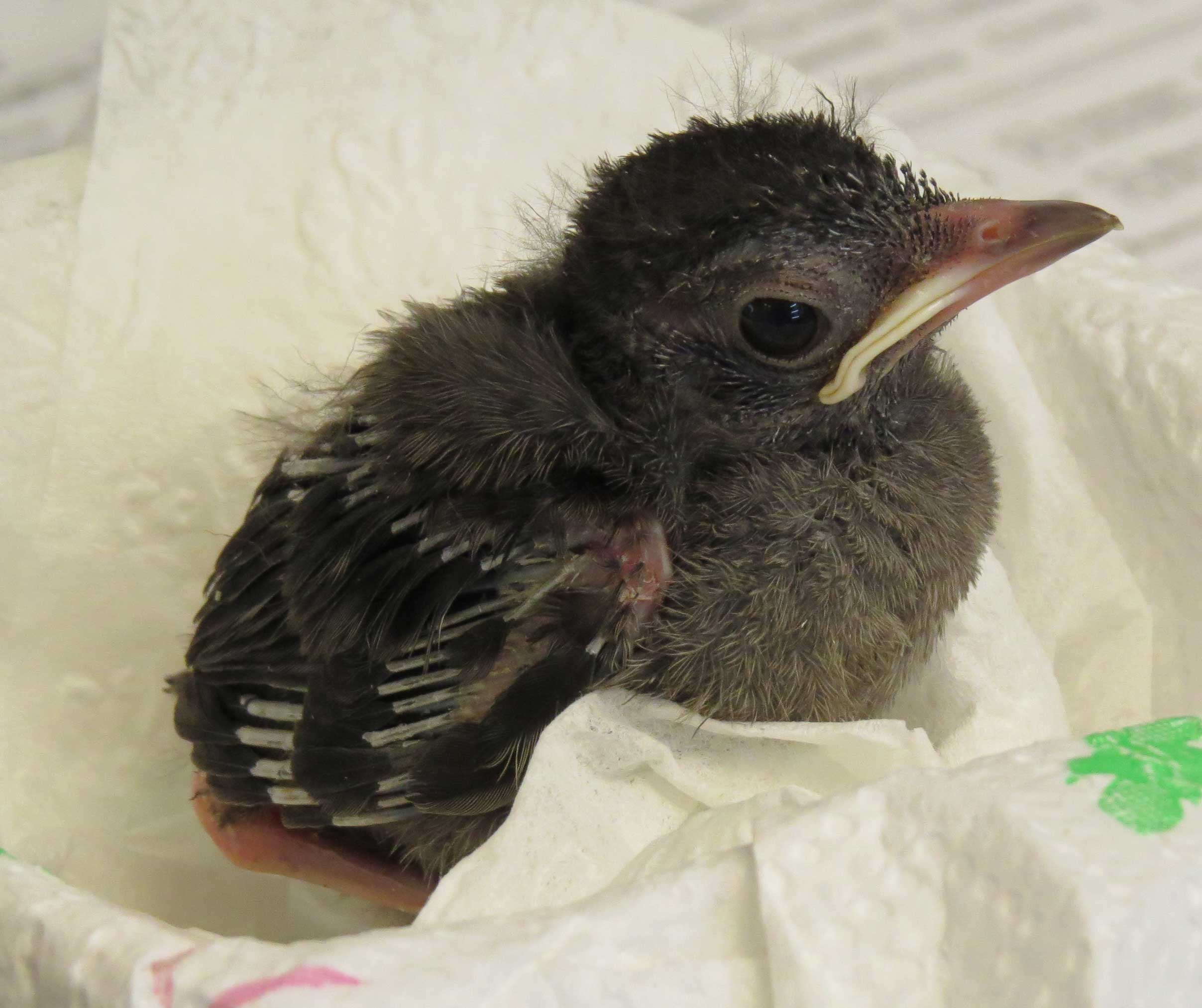
Catbird
Say hello to this little catbird who was found on the ground! The catbird's endeering song resembles a kitten's mewing.
This Great Crested Flycatcher and five Northern Rough-Winged Swallows arrived at WBR in early June. The group is doing well and will be ready for release soon! Visit the below links to learn more about these birds. Great Crested Flycatcher http://www.allaboutbirds.org/guide/Great_Crested_Flycatcher/id Northern Rough-Winged Swallow http://www.allaboutbirds.org/guide/Northern_Rough-winged_Swallow/id Learn more about Wild Bird Rehabilitation at WildBirdRehab.org.
Great Crested Flycatcher & Northern Rough-Winged Swallows
This Great Crested Flycatcher and five Northern Rough-Winged Swallows arrived at WBR in early June. Visit the below links to learn more about these birds.
Great Crested Flycatcher
http://www.allaboutbirds.org/guide/Gr...
Northern Rough-Winged Swallow
http://www.allaboutbirds.org/guide/No...
This video depicts just a few visitors who were rehabilitated and released from Wild Bird Rehabilitation during May and June 2015. Visit our website to see more rescue stories! WildBirdRehab.org
This American Crow was found near Daniel Boone Library in Saint Louis after he had fallen from his nest. He has been recovering at WBR since 5/31/2015. He is now in the aviary and doing well. Visit us online to learn more about WBR: wildbirdrehab.org
